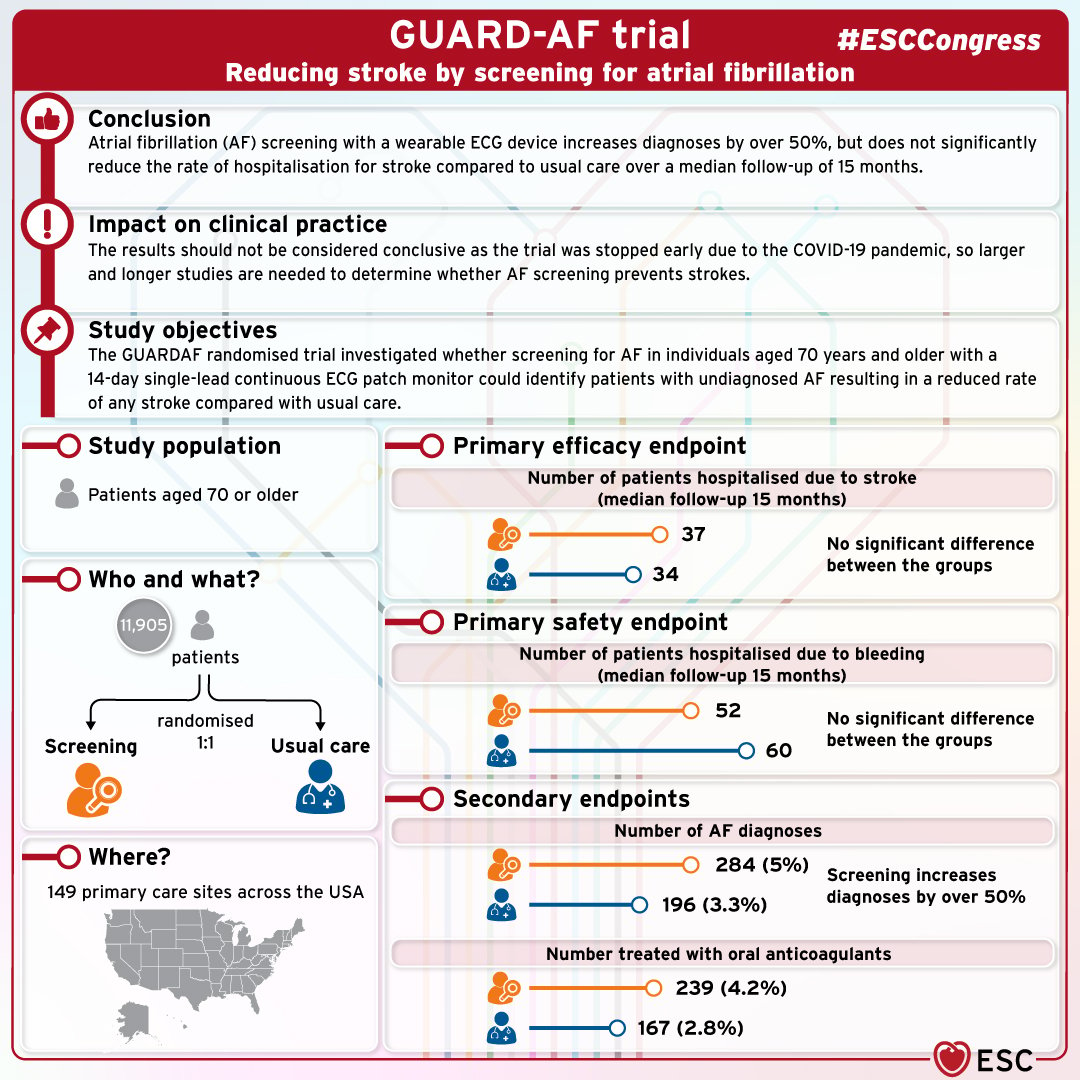According to research presented at the ESC Congress 2024 in London, screening for atrial fibrillation (AF) with a wearable heart monitor over a two-week period can identify older adults with this potentially dangerous heart rhythm disorder but does not reduce the risk of subsequent strokes. However, the trial was cut short due to the COVID-19 pandemic, making it difficult to draw definitive conclusions about the overall benefit of AF screening in reducing stroke-related hospitalisations.
The GUARD-AF trial included 5,952 participants who were assigned to screening and 5,953 to usual care. Of those assigned to screening, 5,684 (96%) returned ECG monitors with results that could be analysed.
During an average follow-up of 15 months, the number of stroke cases was slightly higher in the screening group compared to usual care (37 vs. 34), while bleeding events were slightly lower in the screening group (52 vs. 60). AF diagnoses and treatment with oral anticoagulants were more common in the screening group than in the usual care group (5% [284 patients] vs. 3.3% [196] and 4.2% [239] vs. 2.8% [167], respectively).
The study found a 52% increase in AF diagnoses over a maximum of 2.5 years of follow-up and a rise in the use of oral anticoagulants, with no corresponding increase in hospitalisation rates for bleeding and no significant reduction in stroke-related hospitalisations compared to usual care.

Given that cardiovascular disease (CVD), including heart attack and stroke, remains the leading cause of death in Europe and worldwide, the European Society of Cardiology is advocating for the inclusion of CVD and diabetes screening in national and EU health plans to prevent CVD and raise awareness about cardiovascular health at the population level.
AF is the most common heart rhythm disorder, affecting over 40 million people globally. It is estimated that one in three Europeans will develop AF during their lifetime. Symptoms of AF include palpitations, shortness of breath, fatigue, and sleep disturbances, but many individuals do not experience symptoms, leading to undiagnosed cases. AF can also be intermittent, which complicates its detection.
Individuals with AF have a five-fold increased risk of stroke and are often prescribed anticoagulants to prevent blood clots.
Recent trials have shown that brief, one-time AF screenings do not significantly increase diagnosis rates, while longer-term screenings have found higher diagnosis rates, particularly for paroxysmal AF. However, none have demonstrated that AF screening reduces stroke rates.
These results add to the existing evidence on AF screening and underscore the challenges in assessing its impact on clinical outcomes. AF screening should not be routinely recommended until there is clear guidance on who should be screened, how, and for how long, along with its true effect on stroke prevention.
It is important to note that despite being the largest study to use a 14-day patch-based continuous ECG monitor as the screening strategy, these findings are not conclusive due to the early termination of the study and fewer clinical events than expected. Additional studies with longer follow-up and participants at higher risk for stroke are needed to fully understand the potential of AF screening in reducing stroke rates.
Source, Slide and Image Credit: ESC Congress 2024








